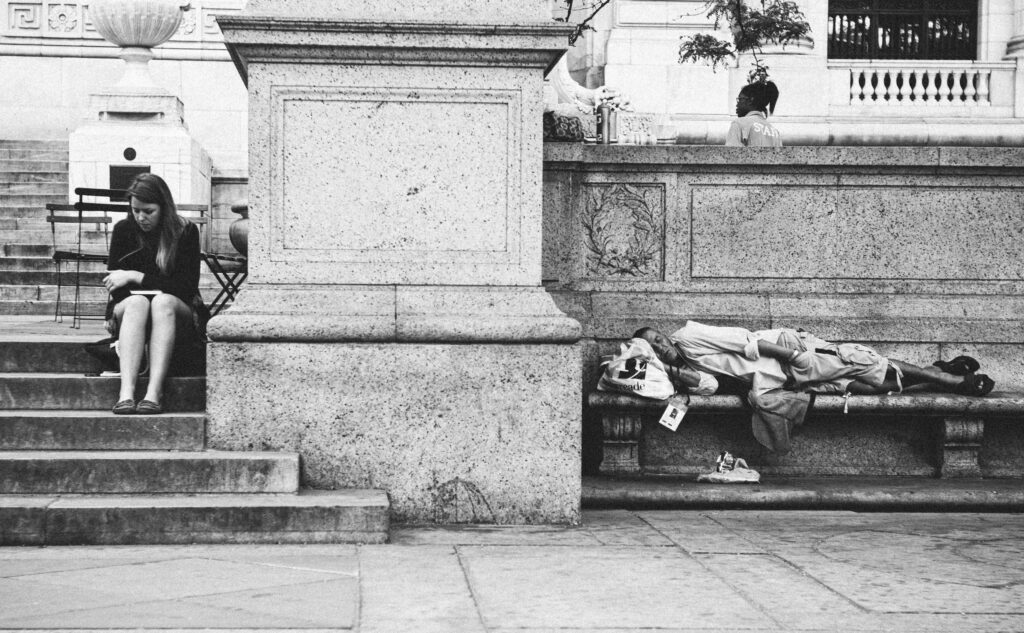Freedom, equality, accessibility and democratic institutions refer to different facets of “democracy”. Yet, at its most basic, democracy refers to the degree to which participation and mutual acknowledgment are encouraged in a society. In terms of urban design and urban planning, the phrase “democratic design” often refers only partly to the intentions of the designer or urban planner but, more often than not, democratic design needs to include not only their expertise and knowledge, but also that of local communities. Understanding how this can be achieved and why it is so important is something that I want to explore in this article. In looking at some examples, my intention is to explore what is involved in the process of designing with democracy in mind, who is involved, why this is the case, and what are the benefits of the buzz word “democratic” in today’s world.
To begin with, saying that a city plan or urban design is democratic means that the built environment empowers and acknowledges the users of a space or the urban environment, residents, citizens and people in general, be them the intended users or not. This is extremely rare, even in today’s most vibrant cities. Democratic design is a concept that is not completely disconnected to that of user-centered design. At the heart of these two concepts is the importance of understanding who are the “users” of a building, a public space, an urban regeneration plan, a high street, or a housing estate. For urban planners and designers, the users are not individuals, but communities in the broader sense of the word. But before I delve into a discussion about what a community is, it is important that we ask ourselves who the city belongs to.
Relationships of power: Who does the city belong to?
Take the following example, which is not as uncommon as many would believe: a city council or a municipality puts in place benches where people cannot lie down, only sit. The argument here is that in doing so, these benches will discourage homeless people from sleeping on them, encouraging less disorder, better maintenance of public spaces, less loitering, and mainly reducing the presence of “undesirables” in the city. This is a very well documented example of anti-homeless architecture or “hostile architecture” and it has been reported in cities such as New York City, London, Lima, Bucharest, Tokyo, among others. What this example shows very clearly is that cities are designed and plan for some, but not for others. These urban designs might make the city apparently prettier, more orderly, but this is more problematic than many would think of it, as there are many (like the poor, the homeless) for whom the city is threatening and not welcoming. They also begs the question of who has a right to be in the city. The fact that urban designers and urban policy makers think of the presence of homeless people as undesirable means that they are already applying notions of power onto them, a form of symbolic violence.
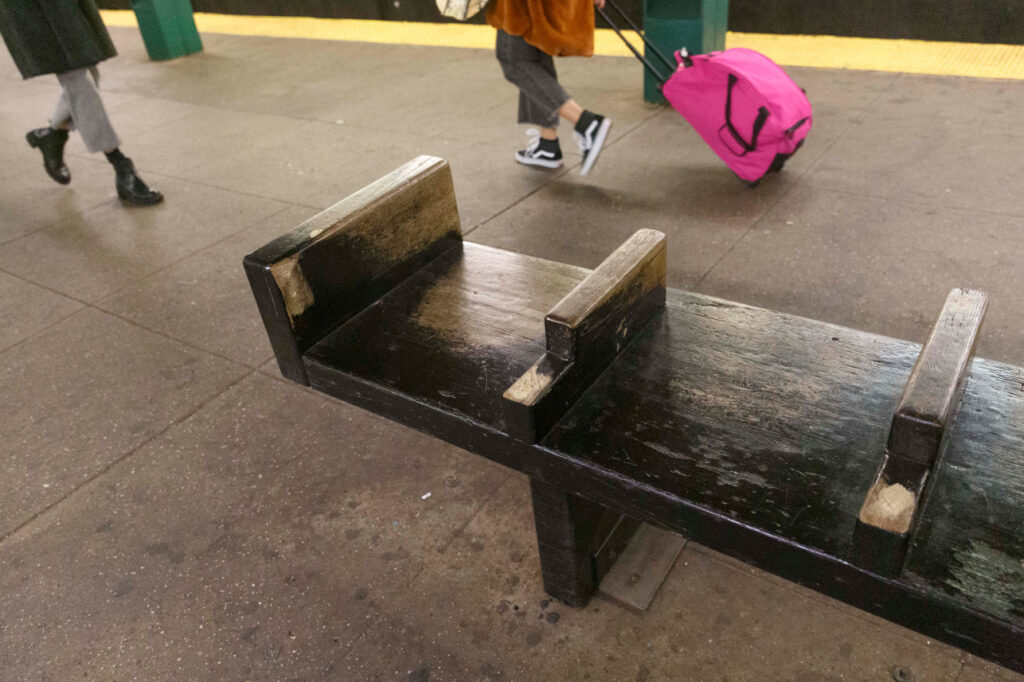
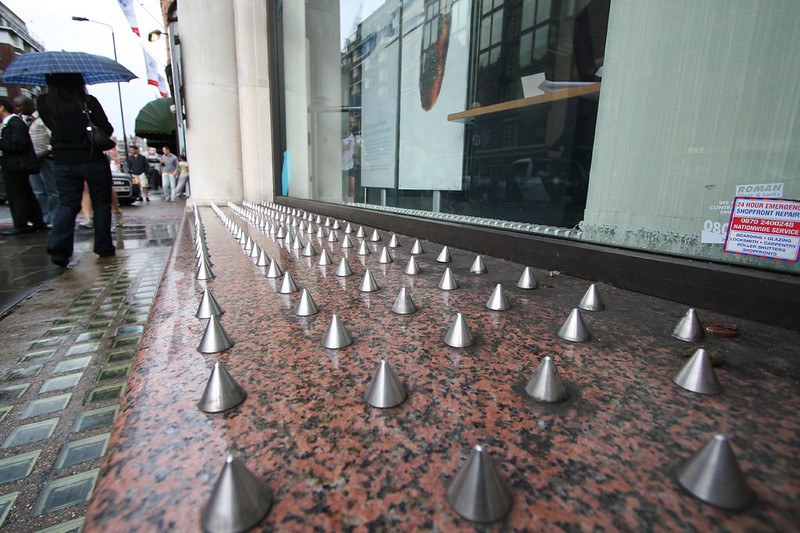
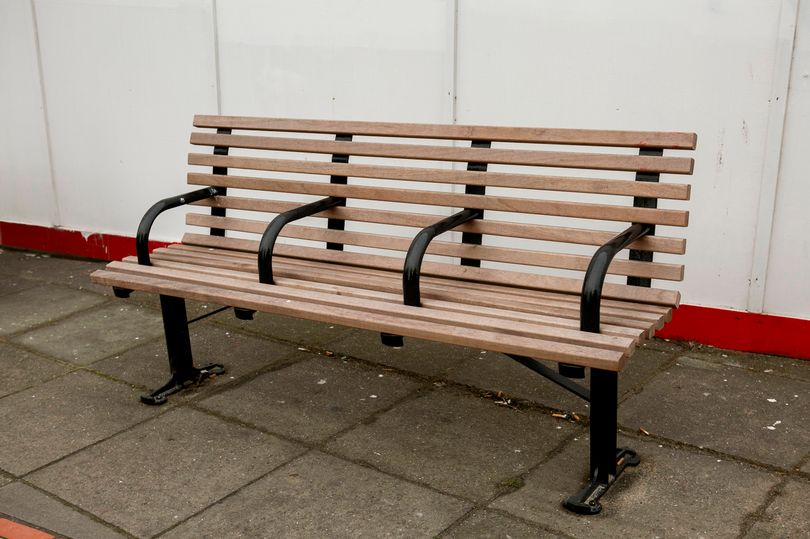
The concept of democratic design therefore would champion the idea that inclusivity has to be universal and facilitate the growth of people, not just make something pretty for prettiness sake or to benefit a certain group in society. The question to ask is then: “who does the city belong to?” Is it the property of those who pay taxes? Or perhaps those who are able to own property? Can it be said that it also belongs to visitors (such as tourists or people who work in the city despite not living there)? Philosophically, this might be a difficult question to answer (remember that to the ancient Greeks only men who owned property had the right to vote, and only until a few decades ago women could not participate in democratic processes), but if we are going to stick to the contemporary idea of democracy, then the city should, ideally, belong to everyone. Following this, democratic design should discourage vertical relationships of power, or benefitting some people over others. Under the argument of trickle-down economy, in some cases it has been argued that cities should prioritize not people themselves, but economic growth or giving economic incentives to certain economic players in detriment to local residents. Such was the case, for instance, when the mayor (with the support of Long Island City landlords and land developers) offered Amazon extraordinary economic incentives to open its second headquarters in Queens, New York, but local residents opposed the plan as they expected a steep increase in rent in the area. As we can see, the question of who the city belongs to and for whose benefit should designers and policy makers work illustrate the degree to which these are hotly contested issues to this day.
Even though in today’s societies around the world discrimination based on race or class would is generally perceived as unacceptable, to varying degrees, many cities around the world continue to use poverty or undesirability (i.e. toward homeless, the dirty or chaos inducing, or those whose presence would reduce land value) as a way of excluding certain groups. This can be obvious in cities like Johannesburg (Mpho 2011) or Washington DC (see Mabel Wilson’s work on racialized cities in the United States, Wilson 2012) where the histories of discrimination in these cities can still be seen in the urban space to this day. Examples of hostile architecture and the mayoral support for Amazon’s second HQ in New York shows us that democratic design and democratic urban policymaking remains far from the norm. Likewise, sometimes the idea of “making rational decisions” in both urban policy and design is often brought up. But “rationality” does not necessarily imply the good for everyone in a society. Looked at historically, the idea of race superiority was married to that of colonialism and the development of a society by supposedly superior, more rational (Western) societies. In that sense, people in the Americas, Africa, the Indian subcontinent, and South East Asia were supposedly inferior to white people, and Europeans needed to “educate” them. Under the idea that Western modernity is the best way for all of human kind, colonialism was rationally well explained and justified. The global and rational idea of modernity is a big part in this because in its “being better” it becomes “being the only choice”. For that reason, if practitioners decide to embrace the necessity of democratic design, then the prime questions to ask before engaging in a project would be “who gets benefited?” and “who does it exclude?”
Relations of power and complex personhood for inclusion
Now that we have established what democracy means in light of power relations in the city, we have to understand the importance of taking into consideration the importance of social complexity for design and urban policy practitioners. To see why this is important, let’s look at the example of social justice. Surely, many would argue that social justice is important in today’s world. But social justice is not predetermined nor is it objective. It changes depending on situations. What might have been considered fair in the urban design of the 1880s might not be so in today’s world. I am not saying social justice in cities are something subjective (i.e. urban designs that encourage deep class divisions are below a standard that contemporary societies around the world cannot tolerate). What this means is that for democratic design what is most important is to hear the different voices of communities, be them visible or not. This is important even when they might challenge the assumptions of urban designers and policy makers or when these voices contradict each other in one way or another.
Often, as human beings, we want to believe that there are universal values and things that will flat out benefit everyone, but these signify a mere consensus that has been reached by a specific group of people. In reality, this is where the complexity of social and cultural life comes into play. This does not mean that we can never reach consensus about what quality of life is or how urban spaces should be designed. What it means is that we should always be critical about those things that seem ‘natural’ or are taken for granted at a specific point in time.
If urban designers and policy makers want to engage with democratic design that can take into consideration the benefit of all citizens, then the perspectives of those they are designing for matter a lot. Their voices should help define our position in the world and how we interpret everything else as democratic designers and urban policymakers.
The importance of communities and horizontal relationships
Cities are not designed objects, there are many voices, interactions and life within them. Cities (which are designed often against the grain of people’s everyday lives) are made of spaces full of life that have cultural, economic and political dimensions. Moreover, cities are not only inhabited by individual human beings, but by human beings that exist in communities. Human beings are social animals and, especially in cities, we all form communities. Belonging to a community in a city is important for people’s quality of life. Whether we recognize it or not, everyone is part of a community. But, communities transcend our individual quality of life; communities are of absolute importance for the economic life and vibrancy of cities. To a great extent, the benefits of democratic design are interlinked with the wellbeing of a wide range of communities.
Let’s look at an example. New York City has, for decades, been an important fashion and innovation hub. Professor Thuy Tu has studied the underpinnings of a fashion design industry whose strengths is built on contact and face-to-face relationships between designers and garment producers in New York City. As she shows in her research, innovation in fashion emerges not out of the creativity of individuals (fashion designers) but from the contacts that occur between fashion designers and garment producers in the city, effectively making all of these actors part of a fashion community. By destroying places, the locations where these interactions take place or the institutions that support it, you are destroying aspects of the creative process and the things that relate to the fashion community that make the design process possible. These face-to-face interactions are essential to the New York fashion vibrancy; it is these points of contact that are really what makes this industry possible. As Tu explains (Tu 2011) this vibrancy can only emerge by making fashion labor visible. Traditionally, the relationship between designers and producers is envisioned by outsiders as hierarchical relationships, but these relationships need to be more horizontal to “reduce distance” between people and a community to emerge. The argument here is that fashion labor cannot be sent offshore because without the so-called Garment District (located in Manhattan between Fifth and Ninth Avenue, from 34th to 42nd streets) the city would lose its fashion innovation engine. A sense of community born through everyday horizontal contacts is an important reason why New York City is a fashion hub and not just a place where designers can live while they send all their production to China, Bangladesh or Morocco. The fact that there is still an important amount of both producers and designers in the urban space of New York City means that they can act as a community, and why their voices as a whole must be heard by urban policy makers and urban stakeholders.
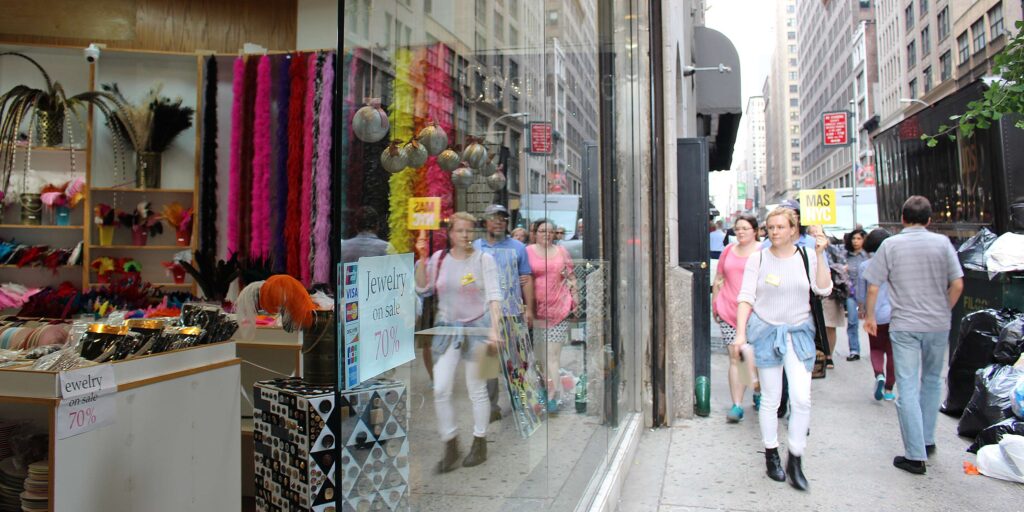
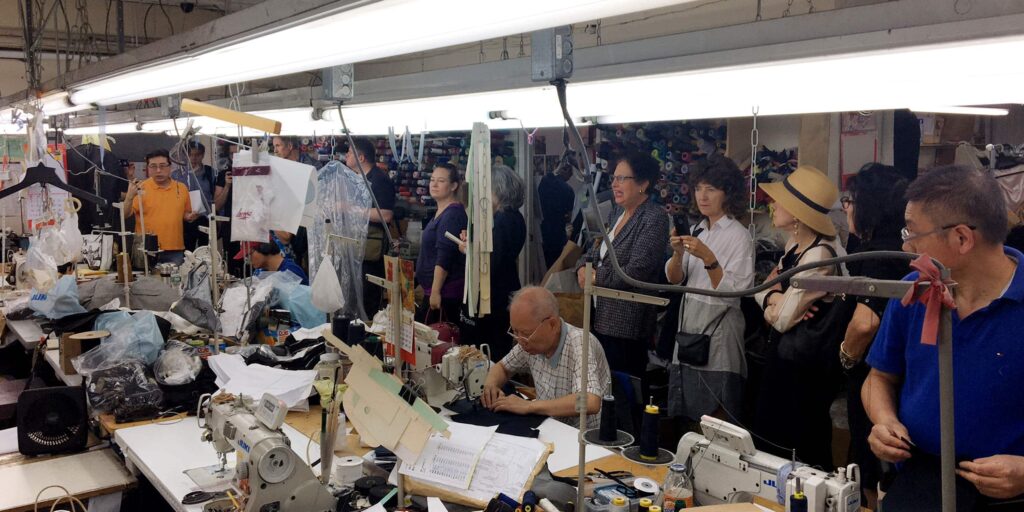
Just like New York City, other cities around the world owe their vibrancy and major economic industries to other such communities, such as those made of musicians, recording studio owners and venue owners involved in music-making community in London, or financial institutions, stock brokers and banks in New York’s Wall Street, or the interaction between chefs, gastronomy students, and the wide availability of produce markets and food cultures in Lima, Peru. Designing and creating urban policy by listening to communities (a central tenet of democratic design) is of absolute importance to generate urban vibrancy and the emergence of economic and innovation hubs in cities around the world. Ultimately, when we talk about democratic urban design we are not talking about specific buildings or designs, but rather about a way of thinking about communities and the importance of their voices within the design process.
Democratic design hones in the idea that the voices of communities must be listened to. But, by definition, such democratic practices must also foster the emergence and thriving of communities in cities where, by definition, people live surrounded by strangers. We have established that horizontal relations are important to building communities. But how can community-building be fostered among strangers and people who are not like you? For this, it would be absolutely necessary to encourage people to see each other as allies, people with whom they can relate to horizontally, not in a hierarchical manner. To build this kind of community urban planners and designers have to think about how these interactions unfold. Community is a complex idea because most of us tend to take it for granted or think that we all mean the same with this term, when in fact we might be meaning very different things. Furthermore, communities are very much grounded in space as they encompass a range of everyday relationships in which people relate to each other intentionally and unintentionally. In that sense, communities have much to do with circuits of movement. As Delany argues (Delany 1999), social interactions do not necessarily directly translate into communities, but at the very least contact is important on a personal level in urban contexts. As he shows in his examples of contact between strangers in New York City, there is a pleasure in communication and contact when it happens across communities and class, between people who are not necessarily like us. It is the kind of vibrancy one feels when attending a protest march, but also the kind one gets from random conversations with strangers in corner stores, markets and public spaces around the world.
Why democratic urban design matters
Democratic design fosters social wellbeing, it nurtures communication and contact between different types of people, it makes urban life vibrant and it benefits everyone, not only socially but also, as we have seen above, economically and culturally. Democratic design is about listening to a wide range of communities and working with them not for or against them. Communities are what make the social landscape of an urban space much more vibrant and welcoming. For this reason, it is important that urban design and policies foster a sense of horizontality in human relationships that take place in the city.
Going back to the example of hostile architecture, as we have already established, homeless people are urban residents and their voices should be heard by policy makers and urban designers. In doing so, stakeholders would realise that the solution to homelessness is not to design for them (for instance, making benches more comfortable) but to identify solutions that can end homelessness to begin with. This begs the question of whether this is something designers can do. Democratic design requires thinking of planning the city through collaborations between designers, architects and urban planners, on the one hand, and economists, social researchers, business people and academics, on the other. The importance of these collaborations for design and urban policy will be the object of another article, but here it suffices to understand that democratic urban design cannot exist in a vacuum, even if designers and policy makers have the best intentions. As mentioned before, democracy is about listening to the voices of local communities and, likewise, the solutions to the problems identified can only be found by bringing together different fields of expertise and lived experiences.
Cover Image: Luis Tsukayama-Cisneros
References
Matsipa, Mpho, “Urban Mythologies,” in Kentridge, William. Fire Walker: William Kentridge, Gerhard Marx. Johannesburg: Fourthwall Books, 2011. pp. 61-9.
Tu, Thuy Linh N. Beautiful Generation: Asian Americans and the Cultural Economy of Fashion. Durham [N.C.]: Duke University Press, 2010
Delaney, Samuel R. Times Square Red, Times Square Blue. New York: New York University Press, 1999
Wilson, Mabel. Chapter 2, “Exhibiting the American Negro,” Negro Building: Black Americans in the World of Fairs and Museums. Berkeley: University of California Press, 2012

